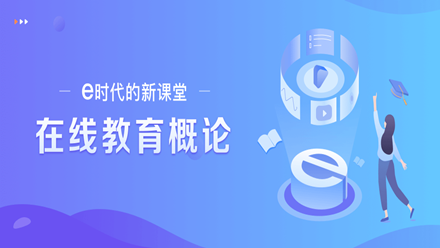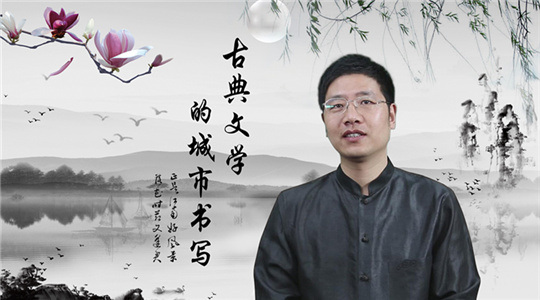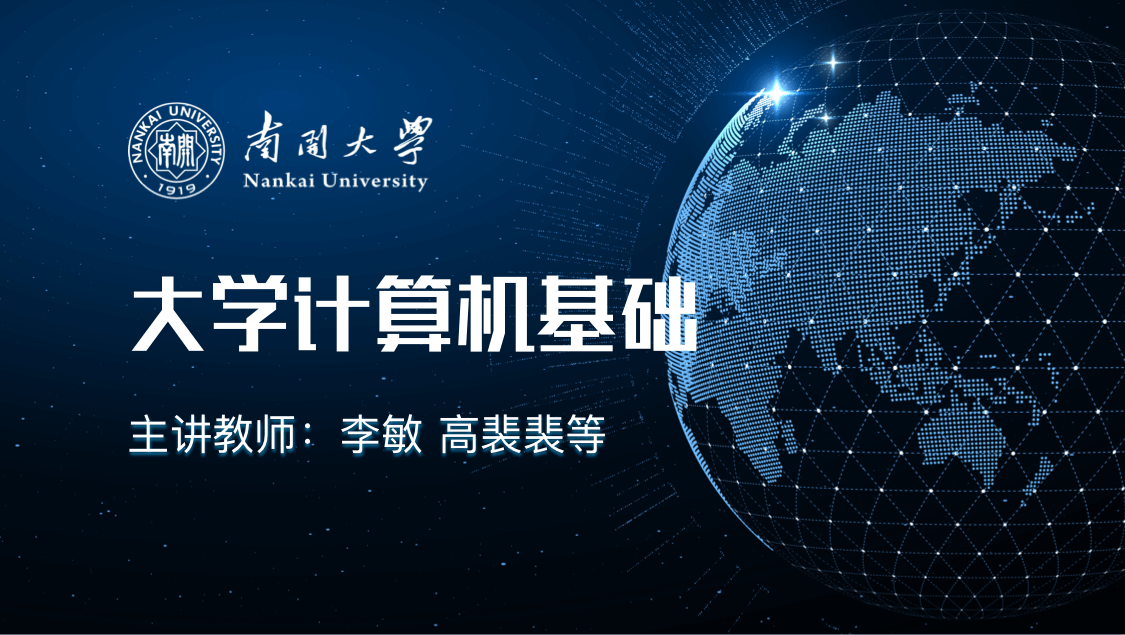
当前课程知识点:e时代的新课堂——在线教育概论 > 第二章 为什么做在线教育 > 2.2.1教育需求的发展 > 2.2.1教育需求的发展
接下来这一节课
Next in this class,
让我们来从学生的学习需求角度
from the perspective of students' learning needs,
来探讨一下
let's explore
为什么在线教育更适应学生的学习需求
why online education is more suited to students' individual needs.
我是清华大学计算机科学与技术系的郑莉
I'm Zheng Li from the Department of Computer Science and Technology at Tsinghua University.
今天我邀请吴永和老师
Today, I've invited Mr. Wu Yonghe
跟我一起为大家来介绍这节课的内容
to co-introduce the content of this lesson to you.
好的 很高兴跟大家跟各位同学来分享
Okay. I'm very glad to share this content with you.
首先我们想从两个方面
At the beginning, we would like to talk about it from two aspects.
第一个是关注从学生的这个
Firstly, from the aspect of paying attention to
就是个性化的学习的需求
students' needs for personalized learning.
第二个方面就是从
Secondly, from the aspect of
提供自身[视频中是:自适应]学习的条件
providing conditions for adaptive learning,
特别是个性化的学习
especially personalized learning.
那第一个层面
The first aspect
主要是从人的这个角度来讲的
is mainly from the perspective of people.
那关注的是个性化的学习的需求
It is concerned with the need for personalized learning.
那主要是从四个方面
It is mainly reflected in four aspects.
第一个方面就是
The first aspect is
每一个同学他的知识的掌握的程度
that the degree of mastery of the knowledge
how well a student master the knowledge
是不同的
varies from student to student.
person to person.
第二个就是学生的学习的兴趣
The second aspect is that students' learning interest
也是不同的
varies from person to person.
第三个方面就是
The third aspect is
学习的兴趣
that students' learning style,
特别是偏好这方面不同的
especially their learning preference, varies from person to person.
另外还有一个就是学生的能力
The other aspect is that students' learning abilities
也是不同的
vary individually .
这是我们围绕着就是
Those are the aspects centering around
从学习的个性化的学习的需求这种
students' needs for personalized learning.
第二个方面我们想讨论是
The other thing we want to discuss is
提供自适应学习的条件
providing conditions for adaptive learning,
特别是关注
especially paying attention to
个性化的这个方面的学习条件
conditions for personalized learning.
那么涉及到第一点
The conditions include
就是互联网+的这样的环境
the an environment of Internet Plus
那后面我们会具体会阐述的
which we will elaborate on later.
第二点就是
They also include
智能化的在线学习的平台
intelligent online learning platforms,
特别是慕课的这样的一个平台
especially MOOCs.
那第三个方面就是技术层面
In addition, at the technical level,
就是关注
we pay close attention to
教育大数据和学习分析的技术的运用
the application of big data inof education and learning analysis technology.
那最后一点就是人工智能的技术
The last point is the application of artificial intelligence,
特别其中的运用的是
especially the application of
智能代理的技术的运用
intelligent agent technology.
那么接下来就请吴老师
Next, Mr. Wu
从三次教育革命的
will talk about the course of the development of
这样一个发展历程的角度
the three educational revolutions
来给我们介绍一下
and introduce us to
教育发展对于在线教育有哪些需求
the demands of online education for educational development.
那么吴老师
So, Mr. Wu,
请您来给大家介绍一下
please begin.
上面我们一张图
From the chart there,
看到了就是三次革命的一个发展的情况
we know something about the development of the three revolutions.
我们看看整个的教育的需求
Let's take a look at the overall educational needs.
第一个是在农工时代[应该是农耕时代吧]的一个个性化的教学
The first was personalized teaching in the agricultural age.
这个个性化教学就像现在我们的学徒制
Personalized teaching was like the system of apprenticeship we have today.
虽然它是一个个性化的教学
Although it was personalized teaching,
但是它的效率比较低
it was less effective.
师傅带徒弟他带的人是有限的
The number of apprentices a master could teachaught was limited.
最多能带到十个徒弟
It was a big deal
就是已经很了不起了
for a master to teach ten apprentices at most.
在这个情况下
In this case,
就是比较低效的一种教学的手段
it was a relatively inefficient means of teaching.
那第二个阶段是
The second stage was
大规模的一个工业时代的
the class teaching system
班级授课制的
in the industrial age
这种规模化的一个生产的方式
which was characterized by large-scale production.
这个面向的是
That was the case
在第一次工业革命和第二次工业革命的
during the First Industrial Revolution
一个状况
and the Second Industrial Revolution.
那么这个方面
In this aspect,
就是整个的授课的班级授课制的
in the class teaching system,
它的要求 内容和教学的方式都一样的
the requirements, the teaching contents and the teaching methods were the same.
特别是基于班级的方式来授课的
Teaching was especially carried out on the basis of class.
那第三个阶段是
The third stage is
我们讲的第三次工业革命
the Third Industrial Revolution.
那这个工业革命
The Third Industrial Revolution
带来了一次技术的条件
has provided technological conditions,
比如像提供的数字化时代的
for example, technologies in the digital age,
比如讲现在我们互联网+的这些技术
like Internet Plus related technologies,
包括3D打印
including 3D printing,
这个全球化的这个背景下面
within the background of globalization.
那在这个方面提供的是一个生态化的
It has provided an ecological,
网络化的分散化的和生命化的一个
network-based, decentralized, life-oriented,
特别是后面一个个性化的一种学习的
and especially personalized
这种环境
learning environment.
那么这种学习环境
The learning environment
跟以往是不大一样的
isn’t the same as before.
因为我们现在看看
We can see that
现在我们的大学生毕业以后的时候
nowadays, after students graduate from university,
同样一个班级上的
those from the same class
毕业以后他所找的工作都不一样
actually find different jobs.
但是现在如果我们学的理论
But if the theories we learn
都是一模一样
are exactly the same,
好像似乎是有点问题
there seem to be some problemsit seems a little bit strange for this phenomenon.
但是现在我们的授课的方式
But the way we teach now
基本上采用的还是
is basically the same as
第二次教育革命所采用的这种方式
that of the second educational revolution:
班级授课制
the class teaching system.
所谓的教学模式方式都一样
The so-called teaching modes and methods are the same.
大家学的一样
Everybody learns the same thing.
这样可能存在一个矛盾
There may be a contradiction.
那我们再看看近阶段
Let's take a look at our most recent stage.
特别是今年2018年4月份的时候
Especially, in April 2018,
教育部颁布了一个
the Ministry of Education issued
教育信息化2.0的行动纲要
the "Action Plan of Education Informatization 2.0,"
里面提出来一个构建网络化 数字化
which suggests building a network-based, digital,
智能化 个性化和终身化
intelligent, personalized and lifelong
这个五化的一个教育体系
educational system.
那这个层面我们越来越关注
So, in this case,
就是一个学生的
students' personalized needs
一个个性化的需求的
which we are paying more and more attention to
政策和技术层面上都充分体现出来了
are fully reflected in both policy and technology.
-混合式教学该怎么做?与清华老师一起聊聊
-看清华老师如何进行大班混合式教学
--Video
-如何做好混合式课堂的互动
--Video
-与清华大学老师聊聊慕课独特的教学设计
-“挑战60s”授课短视频大赛
--Video
-与清华大学老师聊聊慕课的制作与运营
--Video
-1.1在线教育发展现状
--html
-1.1.1在线教育带来了e时代的新课堂
-1.1.2师生说
--1.1.2师生说
-1.1.3我国在线教育的特点
-1.2什么是在线教育
--html
-1.2.1概念解析
-1.2.2教育的技术发展史
-1.2.3在线教育的五要素模型
-1.3在线教育对教师的机遇与挑战
--html
-1.3.1机遇篇
--1.3.1机遇篇
-1.3.2挑战篇
--1.3.2挑战篇
-1.4在线教育发展的历史
--html
-1.4.1二十世纪的发展
-1.4.2二十一世纪的发展
-1.4.3在线课程三要素
-1.4.4虚拟教育组织
-1.5课程内部体系和外部关系
-第一章 解读在线教育--单元习题
-讨论题
-2.1数字时代带来教育变革
-2.2在线教育更适应学生的学习需求
--html
-2.2.1教育需求的发展
-2.2.2学习风格与学习类型
-2.2.3多模态数据分析学生学习行为与需求
-2.2.4教育目标
-2.2.5拓展学习时空,促进深度学习
-2.2.6自主学习系统的案例分享
-2.3在线教育帮助教师成长
-2.4学校和国家为什么要做在线教育
-单元习题--作业
-3.1高等学校在线教育发展
-3.1.1学校现状
-3.1.2平台与联盟
-3.2不同类型的教师都能得益于混合式教学
-3.3混合式教学的好处
-3.3.1当前的教学问题
-3.3.2教师和学生的收益
-3.4混合式教学的关键细节与常见误解
-3.4.1关键细节一
-3.4.2关键细节二
-3.4.3关键细节三
-3.4.4误解篇一
-3.4.5误解篇二
-3.5智慧教学工具的发展
-3.5.1综述篇
--3.5.1综述篇
-3.5.2雨课堂的诞生
-3.5.3雨课堂的功能
-3.5.4课堂教学需要雨课堂
-3.5.5雨课堂解决面授时间紧张的问题
-3.5.6雨课堂解决课前课中课后的学习效果问题
-3.5.7课前课中课后雨课件设计要点
-第三章 高校在线教育进行时--单元习题
-讨论题
-讨论题
-4.1教育实践的展望(一) 教育创新
-4.2教育实践的创新(二) 教育技术与决策
-4.3教育理论的热点趋势
-第四章 在线教育的未来--单元习题
-讨论题
-5.1邓俊辉老师《数据结构》与《计算几何》教学案例
--html
-5.1.1慕课制作与使用心得(一)
-5.1.2慕课制作与使用心得(二)
-5.2张瑜老师《思想道德修养与法律基础》教学案例
--html
-5.2.1教学理念与混合式教学的主要环节
--Video
-5.2.2章节实例
-5.3杨芳老师《大学英语》教学案例
--html
-5.3.1混合式教学设计心得
-5.3.2 University单元教学设计
-5.4于歆杰老师《电路原理》教学案例
--html
-5.4.1小容量班级完全翻转课堂
-5.4.2大容量班级部分翻转课堂
-5.5郑莉老师《C++语言》教学案例 雨课件样例及校内教学心得分享
--Video
-单元习题--作业






